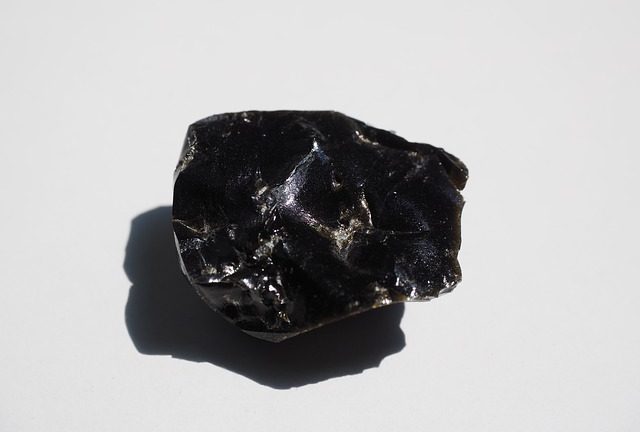It’s easy to botch onyx and obsidian, two of the most popular black gemstones. Both have shiny, cleaned surfaces and a smooth, profound black appearance, and when utilized in jewelry, make for intriguing adornments.
Yet, for every one of their similitudes, onyx and obsidian are two altogether different gemstones, differing in structure, compound properties, and worth, among others. Onyx vs Obsidian is an exceptionally regular discussion among individuals and if you have similar disarray as others you can peruse underneath the significant insights concerning both the gemstones.
Difference Between Onyx And Obsidian
Obsidian
Obsidian is a naturally occurring volcanic glass framed as an extrusive molten stone. Obsidian is created when felsic lava expelled from a volcano cools quickly with minimal crystal development. It is normally found within the margins of rhyolitic lava streams known as obsidian streams, where the synthetic piece (high silica content) causes a high thickness, which, upon quick cooling, brings about a natural glass-forming from the lava. The inhibition of nuclear diffusion through this exceptionally gooey lava explains the absence of crystal development. Obsidian is hard, weak, and nebulous; it, in this way, cracks with sharp edges. In the past, it was utilized to fabricate cutting and piercing instruments, and it has been utilized tentatively as careful surgical tool edges.
Onyx
Onyx principally alludes to the equal grouped assortment of the silicate mineral chalcedony. Agate and onyx are the two assortments of layered chalcedony that differ just in the type of the groups: agate has bent groups and onyx has equal groups. The colors of its groups range from white to pretty much every color. Generally, examples of onyx contain groups of black or potentially white. Onyx, as an unmistakable term, has likewise been applied to resemble joined assortments of alabaster, marble, obsidian, and opal, and misleadingly to materials with bent banding, for example, “Cavern Onyx” and “Mexican Onyx”.
Where do onyx and obsidian originate from?
Both onyx and obsidian are found in a wide range of spots the world over. Both are confined to specific areas, however, since both require certain conditions to frame appropriately.
Onyx can be discovered most regularly – in sequential requests – in Argentina, Australia, Brazil, Canada, China, Czech Republic, Germany, India, Indonesia, Madagascar, Latin America, the UK, the U.S., Uruguay, and Yemen.
Obsidian, then again, can be found in areas with past or present incessant volcanic activity. Such places include Argentina, Armenia, Azerbaijan, Canada, Chile, Georgia, Greece, El Salvador, Guatemala, Iceland, Italy, Japan, Kenya, Mexico, New Zealand, Peru, Scotland, Turkey, and the U.S.
What are the worth and value differences between onyx and obsidian?
Both onyx and obsidian are not excessively costly gemstones. In the past, both have been revered by clerics, shamans, and even eminence for their magnificence and applied otherworldly meaning. Today, they’re a moderate gemstone that arrives in a scope of costs.
Both onyx and obsidian have comparable value ranges and a beautiful bit of jewelry featuring these stones can be purchased for around $50-200. Obviously, the jewelry setting and nature of the stone will influence the general cost in any case, so remember that when shopping.
Generally speaking, onyx will in general be paired with costly materials like gold, platinum, and precious stones and numerous vintage pieces can be found available, all of which add to its worth. Obsidian is commonly more affordable and less important than onyx.



